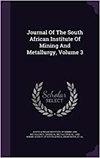基于模拟退火的挖掘极限优化随机分析
IF 0.9
4区 材料科学
Q3 Materials Science
Journal of The South African Institute of Mining and Metallurgy
Pub Date : 2023-02-10
DOI:10.17159/2411-9717/1036/2022
引用次数: 0
摘要
露天矿开采中,由于底层数据存在缺口,如采样不足等,无法真正优化开采极限圈定结果。除了数据的不确定性外,人类或模拟退火等优化方法的启发式特性也会影响最终挖掘极限。目前已经有几种优化器可以代替人工设计。然而,这些挖掘极限设计通常不适合解释这种启发式特征。在本文中,我们提出了一个随机分析工具,它可以与启发式极限优化的结果一起使用,以增加对所得结果的置信度。首先,提出了一种改进的模拟退火算法。然后,将该算法作为案例研究,在美国内华达州的万寿菊矿的十次不同的爆炸中进行测试。最后,利用基于目标的集成概率图对结果进行分析,并对最终解的数据分布进行分析。该算法生成的限位设计包括在可比手工设计中排除的高收入区域,并显示改进的目标和收入值。分析工具提供了区块目的地概率和具有挖掘极限机会值分布的箱形图。此外,使用分析工具,可以在不确定的领域做出明智的设计决策。本文章由计算机程序翻译,如有差异,请以英文原文为准。
Stochastic analysis of dig limit optimization using simulated annealing
The results of dig limit delineation in open pit mining are never truly optimized due to gaps in the underlying data, such as insufficient sampling. Aside from the data uncertainty, there is also an influence on the final dig limit by either humans or by the heuristic character of an optimization method like simulated annealing. Several dig limit optimizers have been published, which can replace the manual dig-limits designing process. However, these dig limit designs are generally not adapted to account for this heuristic character. In this paper we present a stochastic analysis tool that can be used with the results of heuristic dig-limit optimization to increase confidence in the obtained results. First, an enhanced simulated annealing algorithm for dig limit optimization is presented. Then, this algorithm is tested on ten different blasts at the Marigold mine, Nevada, USA, as a case study. Finally, the results are analysed with a destination-based ensemble probability map and an analysis conducted of the final solution data distribution. The generated dig-limit designs of the algorithm include high revenue areas that are excluded in comparable manual designs and show improved objective and revenue values. The analysis tool provides block destination probabilities and box plots with the distribution of opportunity value for the dig limit. Furthermore, with the analysis tool, it is possible to make well-informed design decisions in areas of uncertainty.
求助全文
通过发布文献求助,成功后即可免费获取论文全文。
去求助
来源期刊
CiteScore
1.50
自引率
11.10%
发文量
61
审稿时长
4-8 weeks
期刊介绍:
The Journal serves as a medium for the publication of high quality scientific papers. This requires that the papers that are submitted for publication are properly and fairly refereed and edited. This process will maintain the high quality of the presentation of the paper and ensure that the technical content is in line with the accepted norms of scientific integrity.

 求助内容:
求助内容: 应助结果提醒方式:
应助结果提醒方式:


